Art & Exhibitions
Lynda Benglis Talks Material and Controversy at Bergen Assembly
The artist accepts no limitations.
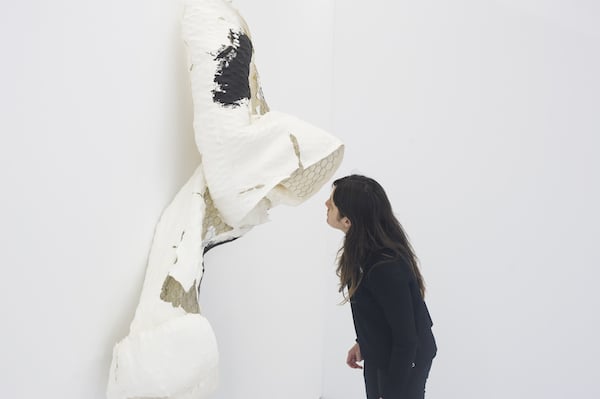
Photo: Thor Brødreskift
The artist accepts no limitations.

Amah-Rose Abrams

“Double Albatross,” the second in a year-long series of exhibitions investigating the practice of artist and provocateur Lynda Benglis opened in Bergen this past Saturday.
The show is a part of the triennial Bergen Assembly, in the Norwegian city of the same name, which operates on the curatorial remit that there is no remit—there are no concepts, no limits, and no rules. As a result, the triennial will run for a whole year (rather than a couple of months) with a number of exhibitions and happenings spread over 12 months, with one main celebration in September, which is sure to bring the international art worlders to the city.
The formerly Berlin-based organisation PRAXES, founded by Rhea Dall and Kristine Siegel, is running a series of investigations throughout the year which encompass exhibitions by Benglis as well as Marvin Gaye Chetwynd, who performed the first of three performances in her new work The Elixia App that incorporated ideas of technological advancement and a recreating of the seventies sci-fi classic Soylent Green, on Friday. Tarek Atoui and freethought are also curating programs for Bergen Assembly.
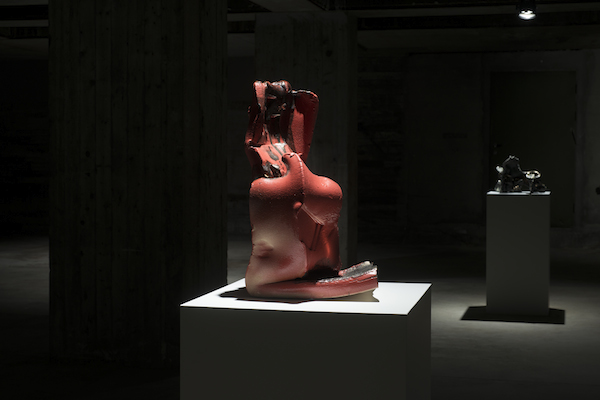
Lynda Benglis, “Glacier Berger” at BAS, Bergen, installation view. Photo: Thor Brødreskift.
Benglis rose to fame in the 1960s as a part of the New York art scene, equally famous for her pour paintings, highly sexual video works, and material-based sculptural paintings as she is for placing an ad in Artforum in 1974 where she appears wearing nothing but a giant dildo and shades.
She creates her artworks in polyurethane foam, latex paint, and even phosphorescent paint that appear to cascade, drip, and give way. She also works in ceramics, and has now started making new pieces in paper, on view in the show “Double Albatross.”
Having lived all over the world, Benglis now resides and works primarily in Santa Fe, New Mexico but she traveled to Bergen to take part in “Slithering Green,” a conference on ceramics in art held in her honor. artnet News caught up with Benglis in Norway to gain insight into decades of producing boundary-pushing work.
What is the meaning behind the title of your exhibition “Double Albatross”? Is it that you feel that your work can be a burden?
Well, each project is a challenge and in this case I started firstly with ceramics. I think as children we begin with clay, it’s one of our first mediums, and when we do that it’s usually just outside in the mud. I think artists always do return to their childhoods, and it’s a real challenge to go back and think about one’s first response.
As for the paper, I already worked with paper but it was pre-made, so it became a whole different process when I began to make my own. I was really undertaking areas that I had not done before. I don’t consider them bad luck at all but I consider them a challenge and something that appears again to haunt you.
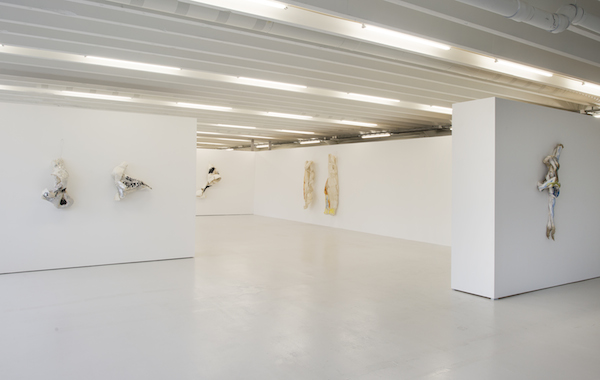
Lynda Benglis, “Double Albatross” installation view at Kunstgarasjen Bergen. Photo: Thor Brødreskift.
You explored themes of sexuality and nature in your work often letting the material tell the story. Are these themes that run through this exhibition?
It’s really contextual. I think the tone of the work or the music of the work has to do with my ability to sing with it. I think each is contextual, each is a different song. It really is a lot of fun—I’m always pushing further. Shifting the shape and form, that’s the fun of it, the challenge. My abilities are always challenged.
What was it like working on a series of interlinking exhibitions, focusing on different parts of your practice? You have Sparkle Knots, made in the early 70s, exhibited alongside new works made this year. Do you see them interrelating?
Well, they are all units, individual works that are really consistent and sometimes, those units interlink in terms of process, or in terms of gesture, or in terms of their meaning.
When I began working with the Sparkle Knots they were an alphabet; it was one way of naming them and also limiting the number I had to produce. After doing so many of them, I tried to go on and do something else so I actually began to metalize some of them [cover them in molten metal]. I am willing to destroy one thing in order to go to another. Just to find out what happens. I think that’s important not to feel fixed upon a particular part of production.
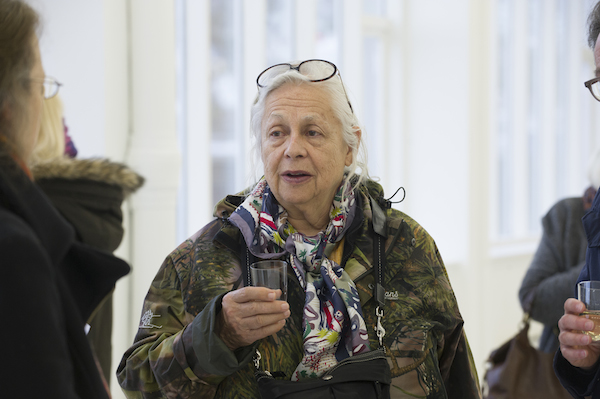
Lynda Benglis at her show “Double Albatross” at Kunstgarasjen Bergen. Photo: Thor Brødreskift.
You’ve quoted Duchamp saying “I am the material” in past reference to your work. Why did you choose to work with paper after foam, paint, latex, and ceramics?
I guess because it’s there [laughs]. I haven’t worked with it before and I happened to have been invited to a paper factory. I met somebody I liked there and I wanted to do it more. I then decided to make my own paper because it’s not that difficult—I had made it before at the Ghandi Ashram in India.
The conference here is focused on ceramics, which you have a strong relationship with, and I can understand why you were drawn to the visceral aspect of working with clay, but what draws you back to it over time?
Its plasticity. Paper is also very plastic when you’re creating it and it has a short life that way and if I’ve lost it after two or three days, if it becomes too dry or something like that, then I recycle it and it can be used again.
I think it has that sensuous quality, that the paper also has, and the foam—it’s almost an oral thing. It’s almost a witchy thing, it’s magic and at a certain point I just love the feeling of it. The silkiness, the plasticity, and the form when you rub it over, it just takes that form and melts into it and sometimes shows the texture. I hope I respond to all those things that I discover as I move along.
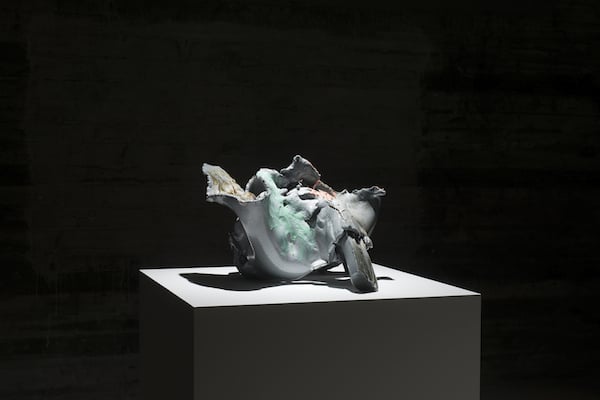
Lynda Benglis, “Glacier Berger” at BAS, Bergen, installation view. Photo: Thor Brødreskift.
As an artist who has known controversy, do you think we are lacking a bit of outré behaviour in contemporary art today?
Well, I didn’t deliberately go out to shock but I knew that it would. I was thinking [in reference to the Artforum Ad] of the best way to refer to both sexes and to make a statement that was really challenging to both. In terms of interpretation, it could be ambiguous because it’s about sexuality and we don’t choose it, but I could then question the possibility of choosing it.
What I find interesting today is the questioning of roles is even more public and that was just the beginning. Symbolically, that [the Artform ad] was the beginning. You can do and be whatever you want to be. Then I thought, if that’s the case then why even feel badly about role-playing? What is it really? We can do what we want. I think the opportunities in the world are limitless.